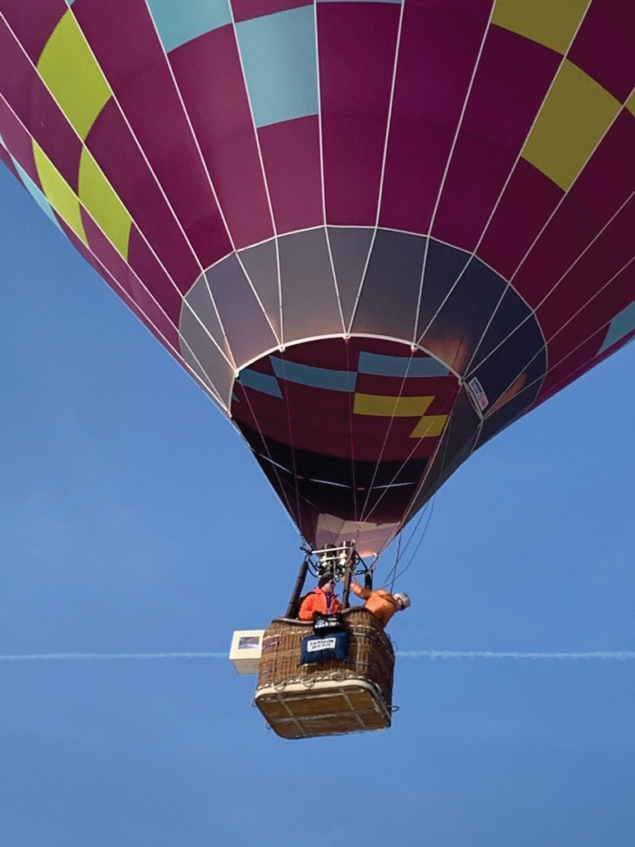
On 25 January, a muon detector, a particle physicist and a prizewinning pilot ascended 4000 m above the Swiss countryside in a hot-air balloon to commemorate the discovery of cosmic rays. The event was the highlight of the opening ceremony of the 42nd Château-d’Oex International Balloon Festival, attended by an estimated 30,000 people, and attracted significant media coverage.
In the early 1900s, following Becquerel’s discovery of radioactivity, studying radiation was all the rage. Portable electrometers were used to measure the ionisation of air in a variety of terrestrial environments, from fields and lakes to caves and mountains. With the idea that ionisation should decrease with altitude, pioneers adventured in balloon flights as early as 1909 to count the number of ions per cm3 of air as a function of altitude. First results indeed indicated a decrease up to 1300 m, but a subsequent ascent to 4500 m by Albert Gockel, professor of physics at Fribourg, concluded that ionisation does not decrease and possibly increases with altitude. Gockel, however, who later would coin the term “cosmic radiation”, was unable to obtain the hydrogen needed to go to higher altitudes. And so it fell to Austrian physicist Victor Hess to settle the case. Ascending to 5300 m in 1912, Hess clearly identified an increase, and went on to share the 1936 Nobel Prize in Physics for the discovery of cosmic rays. Gockel, who died in 1927, could not be awarded, and for that reason is almost forgotten by history.
ATLAS experimentalist Hans Peter Beck of the University of Bern, and a visiting professor at the University of Fribourg, along with two students from the University of Fribourg, reenacted Gockel’s and Hess’s pioneering flights using 21st-century technology: a muon telescope called the Cosmic Hunter, newly developed by instrumentation firm CAEN. The educational device, which counts coincidences in two scintillating-fibre tiles of 15 × 15 cm2 separated by 15 cm, verified that the flux of cosmic rays increases as a function of altitude. Within two hours of landing, including a one-hour drive back to the starting point, Beck was able to present the data plots during a public talk attended by more than 250 people. A second flight up to 6000 m is planned, with oxygen supplies for passengers, when weather conditions permit.

“Relating balloons with particle physics was an easy task, given the role balloons played in the early days for the discovery of cosmic rays,” says Beck. “It is a narrative that works and that touches people enormously, as the many reactions at the festival have shown.”
The event – a collaboration with the universities of Bern and Fribourg, the Swiss Physical Society, and the Jungfraujoch research station – ran in parallel to a special exhibition about cosmic rays at the local balloon museum, organised by Beck and Michael Hoch from CMS, which was the inspiration for festival organisers to make physics a focus of the event, says Beck: “Without this, the festival would never have had the idea to bring ‘adventure, science and freedom’ as this year’s theme. It’s really exceptional.”








